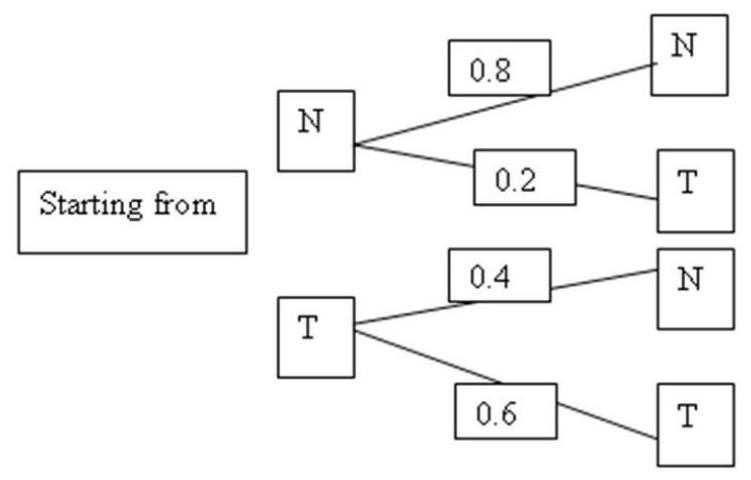Multiple Choice
Newsweek and Time are two competing weeklies, each of which tries to keep their readership while trying to get the other's readers to switch. Among all the households holding yearly subscription to Newsweek or Time but not both, let and denote the states that a household is a current Newsweek or Time subscriber, respectively. The probabilities of switching from one state to the other after one transition (when they renew) are given by the tree diagram. (For simplicity, it may be assumed that all annual subscriptions expire on December 31st of the year and are renewed by all of them for one or the other but not both magazines for one year.) If the current number of households subscribing for Newsweek and Time is, respectively, 2000 and 3000, what would be the number of subscribers to Time after two renewals?
A) 1680
B) 3320
C) 2800
D) 2200
Correct Answer:

Verified
Correct Answer:
Verified
Q27: XYZ Inc. hires only retired people
Q28: A state or a group of states
Q29: A study was made about the incidence
Q30: Jim Cramer, a stock analyst, models
Q31: Judy Jones purchases groceries and pop
Q33: XYZ Inc. hires only retired people
Q34: Newsweek and Time are two competing,
Q35: Which of the following is not
Q36: Newsweek and Time are two competing
Q37: Inverse of a matrix exists even if